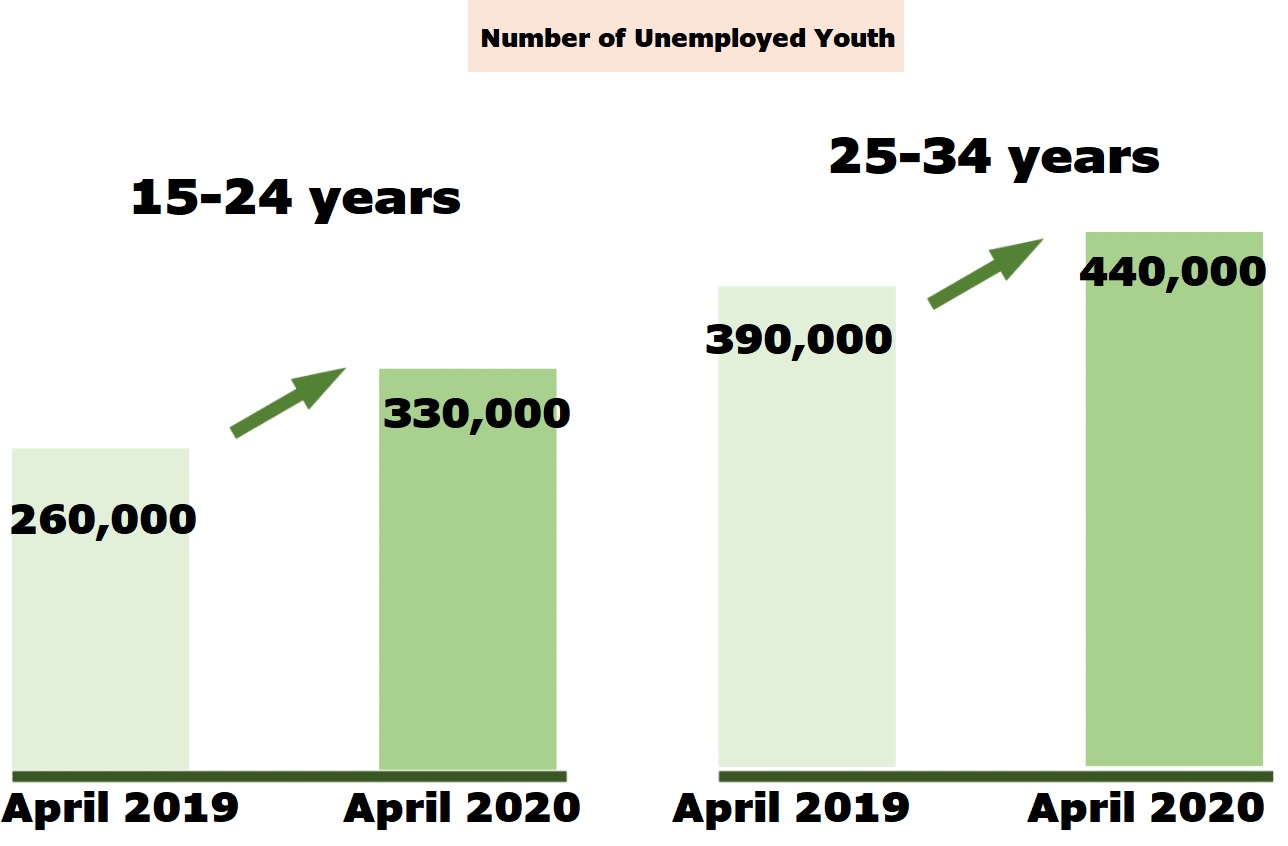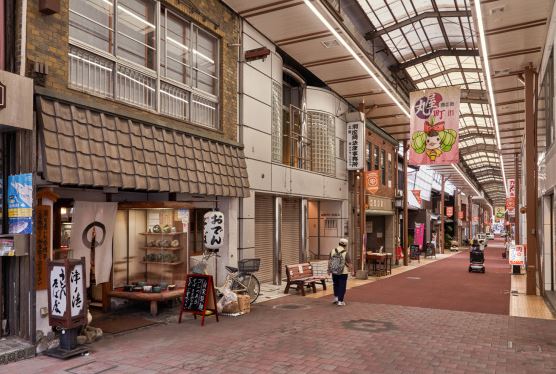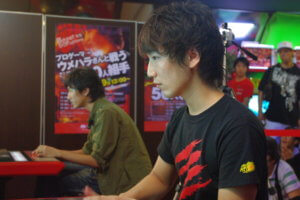Revitalizing an Old Shopping Arcade in Japan
CONTENTS
Two Birds With One Stone – Revitalize Shotengai (or Shoutengai) & Create Jobs For Young People

“Good afternoon!” “Irassahimase! Welcome!” Bright young voices resound inside the shops of the Momodani Station shotengai or shopping street, about 15 minutes by train from Osaka’s downtown. The young people selling recycled clothing and other things in some of the shops here are energetic and enthusiastic. Most of them in their 20s, have either never had a job or have never been employed in a full-time position. Now they have brought a fresh breath of life to this commercial district of small independent retailers that was teetering on the edge of decline.
The young people were hired for the Creating Businesses & Jobs In Empty Storefronts program that started up this past spring as part of publicly funded efforts in Osaka to stimulate local employment. They now staff a recycled clothing shop, a massage studio and several other businesses in empty storefronts in this declining commercial district.
The most important objective of the program is to provide jobs for young people. The problem of unemployment among youth that is shared by most advanced nations has certainly affected Japan as well, with unemployment among 25-29 year olds reaching 7.1% in 2010. The average for the whole generation is 5.1% with unemployment of 9.8% among 15-19 year olds and 9.1% among 20-24 year olds.
Unemployment Trends Among Japanese Youngsters

The other problem that is now being seen even in the urban areas of Osaka is the shuttered store syndrome that has affected so many shoutengai shopping streets and commercial districts in smaller cities and towns, due to the advance of big box stores and shopping malls as well as the lack of successors to take over small independent shops. The Momodani program is commanding the attention of local municipal organizations as it attempts to kill two birds with one stone, solving both problems at once.

The shops opened in June or July after preparations got under way in April and May, and some of the young people running the shops are already thinking about taking over the stores on their own after April of next year, when program funds will run out. A 27-year old female who practices Thai massage in the massage studio says, “If possible I would like to stay on and manage this shop on my own.” At present the studio is only making 10,000-20,000 yen ($125-250) a day in sales, but she looks forward to bringing some youthful ideas to work, “using Twitter and Mixi social networking to bring in customers.” If all goes well, the twin goals of youth employment and revitalization of declining commercial districts can be accomplished in one.

But the program will be over next March. There is not much time left. It seems clear that no matter how many young people can be brought in to the program, they cannot be expected to be able to run the shops on their own, being complete amateurs with no experience of full-time regular work. To this end consultant Tokuyuki Kamaoka and others from Arxis, the private sector company that has been charged with implementing this program, provide daily support to the youngsters.
According to Kamaoka, “We had 3 and 4 times as many applications as openings in the program so we hired the ones that really seemed motivated.” After starting to engage in study groups and actual store management, “in just a few months there was much more progress than we had anticipated,” as Kamaoka describes the young people starting to show a strong sense of responsibility and proactive effort.
The 34 year old woman who runs the recycled clothing shop had worked in clothing sales before this. She says this new job is much more worthwhile and fulfilling than her old job, where “I just arranged clothing that came in from the brands that the store was affiliated with, but now I can select the clothing that I want to carry, decide what to pay for it and price it – I’m involved in all aspects of running the store.” She hasn’t decided what she will do after April next year, but she seems to want to stay involved with the apparel business.
Nurturing the independent spirit among young people
Kamaoka says it is important to nurture the independent spirit among young people who want to come up with ideas and run the business themselves. The ones who manage the classroom rental space are especially creative. One might think that classroom rental business means finding people who want to offer classes in various hobbies or crafts to get them to rent the space, which is made available at an hourly rate. But when space is available much more cheaply nowadays in municipal halls and so forth, selling point of the prime location of the commercial district space is not enough. So, they came up with various ways to bring in money, not only teaching classes themselves but helping instructors bring in students, and consigning the cell phone charms made in one of the craft workshops for sale at another shop on the street. At present they are planning a Halloween promotion together with another commercial district nearby. A 24-year-old female says with more enthusiasm than she has ever felt that “it is wonderful to see your own plans come true, and have items that you made yourself be selling.”

Learning how to handle themselves as adult members of society, how to provide good customer service, being instructed in the basics of business management and marketing by experts and actually engaging in retail management, all while receiving an hourly salary of about 1,000 yen ($13), makes this a great opportunity for these youngsters. But that is all thanks to the 200 million yen ($2.5 million) budgeted for the program.
After next year when funds for the program run out, so that each shop has to support the five people that work there, Kamaoka has “told them they need to come up with a plan that will allow them to raise 1.5 million yen ($20,000) a month in revenue.” To net 1.5 million yen a month they need to have more than that in sales. Since tenant fees will also come out of that, for five people to draw a steady salary they will need to net that at a minimum, and “of course it’s not going to be easy,” tells Kamaoka. “Even among the regular shops on the shoutengai not many are making that much money.” Osaka government representative Ryotaro Nakanishi is unsparing when he says, “If they say they are going to try and continue on their own next year, they will need to make some investment into the business themselves.”
The Thai massage practitioner mentioned above does dream of having her own independent business, but at this point most of the others are thinking about other paths. When asked about her plans for next spring after the program comes to an end, the 22-year-old female who runs the gallery and sells artwork says, “I want to travel to England and study English.” She wants to become a clothing designer. The 27-year-old male who works in the same shop tells of his plans for next year, “I plan to do designing for someone I know in Tokyo who is an apparel maker.” At this stage the ones who want to continue to run the shops seem to be in the minority.

But there are high expectations on the Momodani shopping street. Nakanishi says, “I spoke to the other owners before opening the shops and for the most part they were favorably inclined.” Kamaoka says “Businesses were chosen that would not compete with existing shops,” and is pleased with the outcome, saying “Existing store owners told their own customers about the new shops, and had the grace to want to support the youngsters who were trying hard, so that sense of community that exists in shoutengai shopping streets certainly helped the program.”
Revitalization of shopping streets, helping unemployed young people. If this double-barreled experiment works, it will certainly be a great example for other municipalities that struggle with these same two issues.
<Side Bar: Shutter-douri Problem>

Shuttered syndrome, “shutter-douri” or literally “shuttered street”, refers to shoutengai shopping streets or ordinary streets that are in decline, where shops and offices have closed down and the aspect of their shuttered storefronts becomes conspicuous. A key word that describes the hollowing-out of town centers, the expression can also be “shutter-shoutengai” when describing the shopping street specifically or “shutter-gai” when the overall scene is referred to. This phenomenon started becoming prominent outside of the major metropolitan areas in Japan in the late 1980s, and is a familiar problem today among smaller cities and towns.


